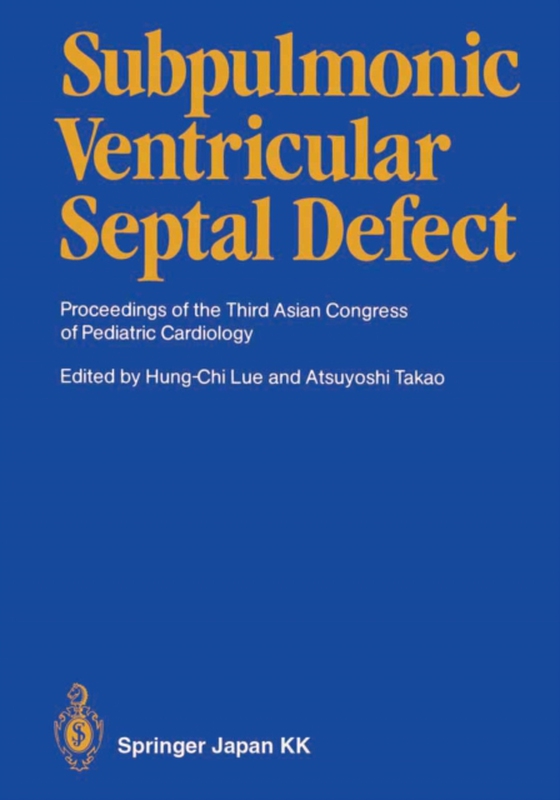
Subpulmonic Ventricular Septal Defect e-bog
436,85 DKK
(inkl. moms 546,06 DKK)
The Asian Society of Pediatric Cardiology has advocated the importance, since its founding in 1976, of studying and disseminating knowledge about the important cardiovascular diseases prevalent in Asia. Subpulmonie ventrieular septal defect, reportedly more common among Japanese than among Occidentals, swiftly became a focus of attention. Soon after the Second Asian Congress of Pediatric Cardio...
E-bog
436,85 DKK
Forlag
Springer
Udgivet
1 december 2013
Genrer
Cardiovascular medicine
Sprog
English
Format
pdf
Beskyttelse
LCP
ISBN
9784431683759
The Asian Society of Pediatric Cardiology has advocated the importance, since its founding in 1976, of studying and disseminating knowledge about the important cardiovascular diseases prevalent in Asia. Subpulmonie ventrieular septal defect, reportedly more common among Japanese than among Occidentals, swiftly became a focus of attention. Soon after the Second Asian Congress of Pediatric Cardiology, held at Bangkok in 1979, fellow Asian pediatric cardiologists resolved to study this problem, and the main theme of the next Congress was scheduled to be "e;Is Subpulmonie Ventrieular Septal Defect an Oriental Disease?"e;. Prospective as weIl as retrospective studies were encouraged, the results to be presented and discussed at the Congress. The Third Asian Congress of Pediatric Cardiology was held in Taipei on November 28, 1983. Distinguished pathologists, cardiologists, and surgeons from the US, UK, Belgium, and the Netherlands - Drs. L. H. S. Van Mierop, S. BlumenthaI, D. McNamara, J. Malm, N. Talner, J. Somerveille, J. Stark, L. G. Van der Hauwaert, and A. E. Becker - were invited to present their work and actively participate in the Congress. The important data thus gathered from both Asian and Western countries, and some results of the lively debates enjoyed during the Congress, are included in this volume. The expert views on the development of the ventrieular septum and the classification of ventricular septal defects appearing in this volume are most succinct and informative.
 Dansk
Dansk

